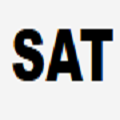We introduce and describe a new heuristic method for finding an upper bound on the degree of contextuality and the corresponding unsatisfied part of a quantum contextual configuration with three-element contexts (i.e., lines) located in a multi-qubit symplectic polar space of order two. While the previously used method based on a SAT solver was limited to three qubits, this new method is much faster and more versatile, enabling us to also handle four- to six-qubit cases. The four-qubit unsatisfied configurations we found are quite remarkable. That of an elliptic quadric features 315 lines and has in its core three copies of the split Cayley hexagon of order two having a Heawood-graph-underpinned geometry in common. That of a hyperbolic quadric also has 315 lines but, as a point-line incidence structure, is isomorphic to the dual $\mathcal{DW}(5,2)$ of $\mathcal{W}(5,2)$. Finally, an unsatisfied configuration with 1575 lines associated with all the lines/contexts of the four-qubit space contains a distinguished $\mathcal{DW}(5,2)$ centered on a point-plane incidence graph of PG$(3,2)$. The corresponding configurations found in the five-qubit space exhibit a considerably higher degree of complexity, except for a hyperbolic quadric, whose 6975 unsatisfied contexts are compactified around the point-hyperplane incidence graph of PG$(4,2)$. The most remarkable unsatisfied patterns discovered in the six-qubit space are a couple of disjoint split Cayley hexagons (for the full space) and a subgeometry underpinned by the complete bipartite graph $K_{7,7}$ (for a hyperbolic quadric).
翻译:暂无翻译




